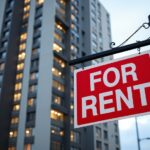As the nation continues its struggle with housing affordability, the lack of adequate housing in the nation is a topic of great contention as demand continues to outpace supply.
In addressing the nation’s housing shortage issue, a recent post by Ross Baird, CEO of Blueprint Local on TheHiill.com makes the case for Opportunity Zones as a viable solution to effectively solving the nation’s housing supply issue.
A fairly new initiative created under the Tax Cuts and Jobs Act of 2017, Opportunity Zones are an economic development tool that allows people to invest in distressed areas across the nation. Their purpose is to spur economic growth and job creation in low-income communities, while providing tax benefits to investors.
“If investors put money from capital gains into projects in low-income areas and keep their investment for 10 years, they receive a major tax advantage in return,” said Baird in his post. “Now, as Congress decides whether to renew or expand the program, we should look at the results.”
Data analysts from ATTOM report that there are 3,558 Opportunity Zones around the U.S. with sufficient data were analyzed (meaning they had at least five home sales in the first quarter of 2025), and found that median single-family home and condominium prices increased from Q4 of 2024 to Q1 of 2025 in 48% of Opportunity Zones nationwide.
“Opportunity Zones have helped create new housing in places that don’t usually get much attention or funding—and they’ve done it at a much lower cost to taxpayers,” notes Baird. “Today, 23% of all new housing under development is in an Opportunity Zone. These investments are happening in all kinds of places. In fast-growing cities like Austin, Texas, new housing is helping relieve pressure on sky-high rents. In Rust Belt communities like Erie, Pennsylvania, more than $100 million in Opportunity Zones investment has helped revive the downtown.”
As part of President Trump’s “One Big Beautiful Bill” Act, a revised Qualified Opportunity Zone (QOZ) program is proposed, starting January 1, 2027, and running through December 31, 2033 to spur economic growth and job creation in low-income communities, while providing tax benefits to investors. One Big Beautiful Bill Act includes modified eligibility requirements, focusing on rural areas and narrowing the definition of low-income communities by narrowing the threshold for census tract eligibility. Tax incentives, such as deferred capital gains taxation, will be available for investments made in QOZs during this period. A portion of new QOZ designations, at least 33% (or all eligible rural areas if less than 33%), must be in entirely rural communities.
“Opportunity Zones also save money. Unlike other government programs that require big subsidies and long approval processes, Opportunity Zones rely on private capital. That makes them a faster and cheaper tool to build housing,” notes Baird in his post. “One study found that Opportunity Zone housing costs taxpayers about $26,000 per unit, compared to up to $1 million per unit government-subsidized affordable housing. A recent Washington Post article highlighted a government-funded housing development that cost $1.2 million per unit and didn’t even include in-room washer-dryers.”
Click here to read Ross Baird’s article on Opportunity Zones in its entirety.







